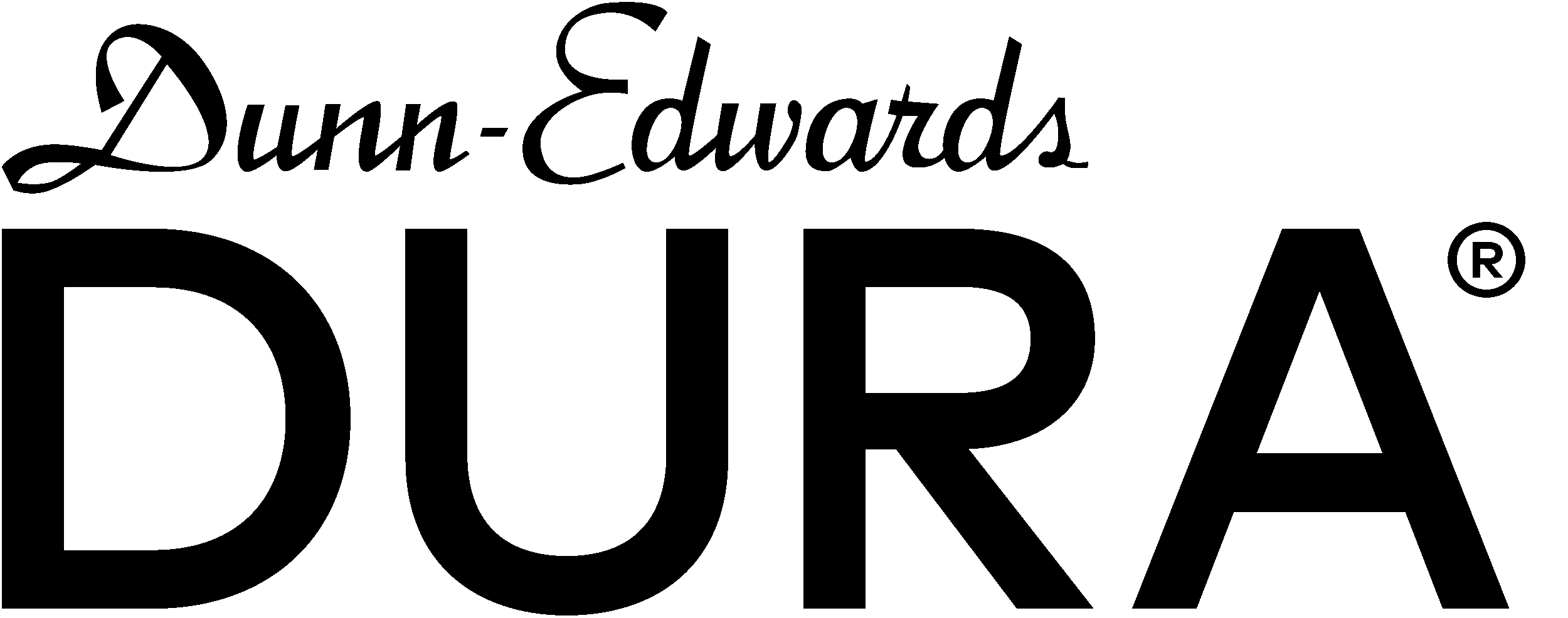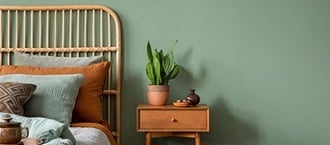Wainscoting is a design technique that has been around practically since homes had walls. Wainscoting consists of wooden (usually) panels that are installed at the baseboard of a wall and extend to about a third to halfway up the wall. Wainscoting panels are capped with a chair rail or molding that separates the upper part of the wall from the lower part. Initially serving as an insulator and for structural support, it is now a decorative design technique that adds instant elegance and sophistication to a room.
Wainscoting instantly elevates the aesthetic of a room and is now most commonly used in dining rooms. Traditionally made of wood, wainscoting is now also available in medium-density fiberboard (MDF), beadboard, plywood, and vinyl, polyurethane or PVC if it’s installed in bathrooms, which are prone to moisture. As a design feature, wainscoting is versatile and can be painted or stained to complement the other elements in the room, usually in a contrasting color or finish. White wainscoting, for instance, gives a classic, clean look, while a dark, rich wood tone for a warmer, more sophisticated style.
Wainscoting has a practical purpose as well, which harkens back to its origins, as it protects walls from scuffs, bumps, the wear of daily traffic and from chairs, hence the common use of a chair rail to separate the wainscoting from the upper part of the wall. Wainscoting is ideal for rooms with taller ceilings, to add a visual separation. From an renovation to a new home build, wainscotting adds a timeless nuance that remains stylish and appealing.
Types of Wainscoting
Wainscoting can be applied in a variety of styles to accommodate the unique design aesthetics of your home, such as raised, wall, flat, and beaded panels. Choose from simple and straightforward to opulent and ornate to suit any design interior. Here are the different styles of wainscoting.
Raised Panel
Raised panel wainscoting is simply a raised center panel installed onto the base planks with highlighting trim. It’s a traditional, classic look that combines elegance with a vintage nuance and is usually done with wood. Choose any wood that has the grain that appeals to you and then paint or stain it. Raised panel gives wainscoting a textured, 3D look that casts understated shadows.
Installing raised panels requires patience and precise measuring for the panels to fit properly and is recommended for only experienced DIYers. First, prepare the wall by fixing any damage, cleaning and priming the surface. Horizontal rails are installed at the baseboard and at the height you choose for your wainscoting. Next the vertical stiles are secured between the rails. Then the raised panels are secured exactly into the grooved framework. You may need specialized trim for the outside corners.
Once the raised panels are installed (or if you’re doing a renovation to existing raised panels), any DIYer can paint them to the desired color. First, prepare the surface with liquid sandpaper and repair any cracks or holes. Use a stain-blocking primer for even coverage with your paint. Both a roller and brushes will be required to get the recessed areas, grooves, and tight corners. Plan on two coats of semi-gloss paint to really highlight the raised panels, allowing the first coat to dry completely before applying the second coat. Follow the proper steps and you’ll be happy with the sophisticated, eye-catching results.

Wall Panel
Easy to install, wall panel wainscoting gives you a seamless look that is clean and simple. Rather than individual planks, wall panel wainscoting uses larger panels that install directly onto the walls, giving a more permanent look. Wall panel wainscoting usually comes in pre-primed MDF or plywood and is ready for whatever paint you choose.
For most DIYers, installing wall panel wainscoting is not a difficult project. All walls must be prepped properly to repair damage and ensure a smooth, level surface. Carefully measure panels with a power saw and attach them to walls studs with a construction-grade adhesive and secured with finishing nails. Fill and sand any seams and finish with baseboards and rails.
Paint wall panel wainscoting as you would other surfaces. Start with a thorough cleaning and degreasing and fill holes and blemishes with spackling compound. Carefully sand and clean the surface a final time. To avoid bleed-through and poor adhesions, apply a stain-blocking primer, even with pre-primed MDF and plywood. To highlight wall panel wainscoting use acrylic latex paint in a satin or semi-gloss and paint in the direction of the wood grain with either a brush or roller. Make sure and apply two coats for complete coverage to show off your handiwork.

Flat Panel
Flat panel wainscoting is a more modern version of classic wainscoting with no raised panels or recessed designs. This style is perfect for minimalist aesthetics and compliments a contemporary interior with a low-key sophistication. You’ll find flat panel wainscoting in wood, thinner plywood, or MDF.
As with other wainscoting, the installation is relatively straightforward and starts with securing the horizontal rails at the top and bottom of the targeted walls. Make sure they are level. Then apply the vertical stiles between the rails. Fit the flat panels into the frame of the rails and styles and secure the panels with finishing nails or framing nailer. Run a fine bead of paintable caulk along any joints or seams. After it dries, sand it smooth with a fine grit sandpaper. You also may need specialized trim pieces on the corners. Again, measure carefully!
To get that pro-quality result with painting, go through the proper steps of cleaning, degreasing and ensuring the surface is smooth and unblemished. As with other types of wainscoting, use a stain-blocking primer, especially if you’re painting over existing paint, stain, or varnish. Acrylic latex is the best paint to use in your choice of color, and a higher gloss sheen will showcase your new wainscoting. And as usual, brush and/or roll with the grain and wait for each coat to dry before applying the next.

Beaded Panel
Beaded panel wainscoting differs from the other styles in that it adds a “beaded” texture to the vertical grooves on each plank that adds a distinctive, eye-catching look. As with other wainscoting, it’s typically made of woods like oak, pine, or maple and you can stain or paint to whatever best compliments your space. It also pairs nicely with raised or flat trim pieces.
Install beaded panel wainscoting just like the other styles starting with the horizontal rails and ensuring they are level. Secure the vertical beaded planks into the studs with finishing nails or a nailer. Use decorative trim pieces on baseboards, caps and corners to give it a slick, polished result. Remember the old adage… measure twice, cut once.
Paint beaded paneling as you would the other types of wainscoting by properly preparing the surface, taking the time to spackle, sand and re-clean areas that need special attention. Use stain-blocking primer, acrylic latex paint and whatever color and sheen is your preference. Again, the higher the sheen, the more the wainscoting will stand out against the entire wall. Note that beaded panels will require more careful painting to cover all the minute grooves and textures.

Wainscoting Color Ideas
Choosing a color for wainscoting will impact the overall tone of the room. You can choose to contrast the room’s color or blend in with it. Contrasting colors will highlight the wainscoting. As with most color applications, whites and neutrals tend to be clean and elegant, while darker hues are warmer and provide a more dramatic contrast. Obviously, your existing color scheme will have an impact on your choices.
Whites/Neutrals
Neutral colors like white, gray, greige (a mix of gray and beige), and tan are excellent choices for wainscoting to achieve a subtle, understated presence that seamlessly blends with shifting color trends. Neutrals create a light, airy ambiance that won’t compete with bolder decor elsewhere in the room. Neutrals on wainscoting are especially well-suited for small rooms to enhance the sense of openness and to maintain stylistic continuity throughout adjoining living spaces.
- Crisp white creates a bright, clean look that will always remain timeless
- Warm white provides a cozy and inviting space
- Soft gray delivers a modern and versatile style
- Greige subtlety fits almost any aesthetics
- Tan/khaki brings a homey comfort to your space

Blues
If you want wainscoting to make more of a visual statement rather than recede into the background, bold shades of blue make for eye-catching wainscoting that adds a punch of color and vibrancy to a space.
- Navy offers a rich and classic mood for refined spaces such as a dining room or home library
- Slate blue provide a sense of calm and serenity suited for spaces of rest and relaxation
- Powder blue evokes a tranquil, coastal vibe ideal for bathrooms, bedrooms, or laid-back living areas

Greens
Shades of green make for lovely, nature-inspired wainscoting that bring warmth and an earthy vitality to interior spaces. Green wainscoting pairs beautifully with warm wood accents and can help blur the line between indoors and out when used in sunrooms or enclosed patios. Whether subtle or saturated, green is an inviting wainscoting color choice that connects spaces to the natural world.
- Sage has a soothing, serene quality ideal for creating a calming atmosphere in living rooms or bedrooms.
- Olive tones lend a sense of sophisticated sophistication, perfect for dens, libraries, or formal dining areas.
- Mint gives kitchens, mudrooms, and entryways a cheery yet relaxed vibe.

Woods
Wainscoting using rich, warm wood tones creates a cozy, inviting atmosphere brimming with natural character and organic ambiance. It lets the inherent beauty of wood tones shine and infuse natural textures into your home's design.
- Dark walnut makes for stately wainscoting that elevates the sophistication in a study, den, or formal living room
- Honey oak imparts a rustic, traditional vibe ideal for family rooms or kitchen nooks
- Driftwood gray provides a weathered, laid-back feel suited for coastal or farmhouse-style sunrooms or mudrooms
Bolds
If you’re feeling particularly adventurous, bold saturated hues make for dramatic wainscoting that acts as a powerful focal point. When used judiciously, bold wainscoting colors allow you to delineate separate areas, like defining the entryway from the living room. Just be sure to balance bold wainscoting with plenty of neutrals elsewhere so it doesn't overwhelm the space.
- Black exudes a rich, sophisticated elegance perfect for creating a moody, high-contrast look
- Deep red brings luxurious depth and warmth fit for traditional living spaces or vintage-inspired homes
- Mustard yellow lends a vibrant, cheerful energy well-suited for playrooms, sunrooms, or eclectic spaces









































Leave a comment